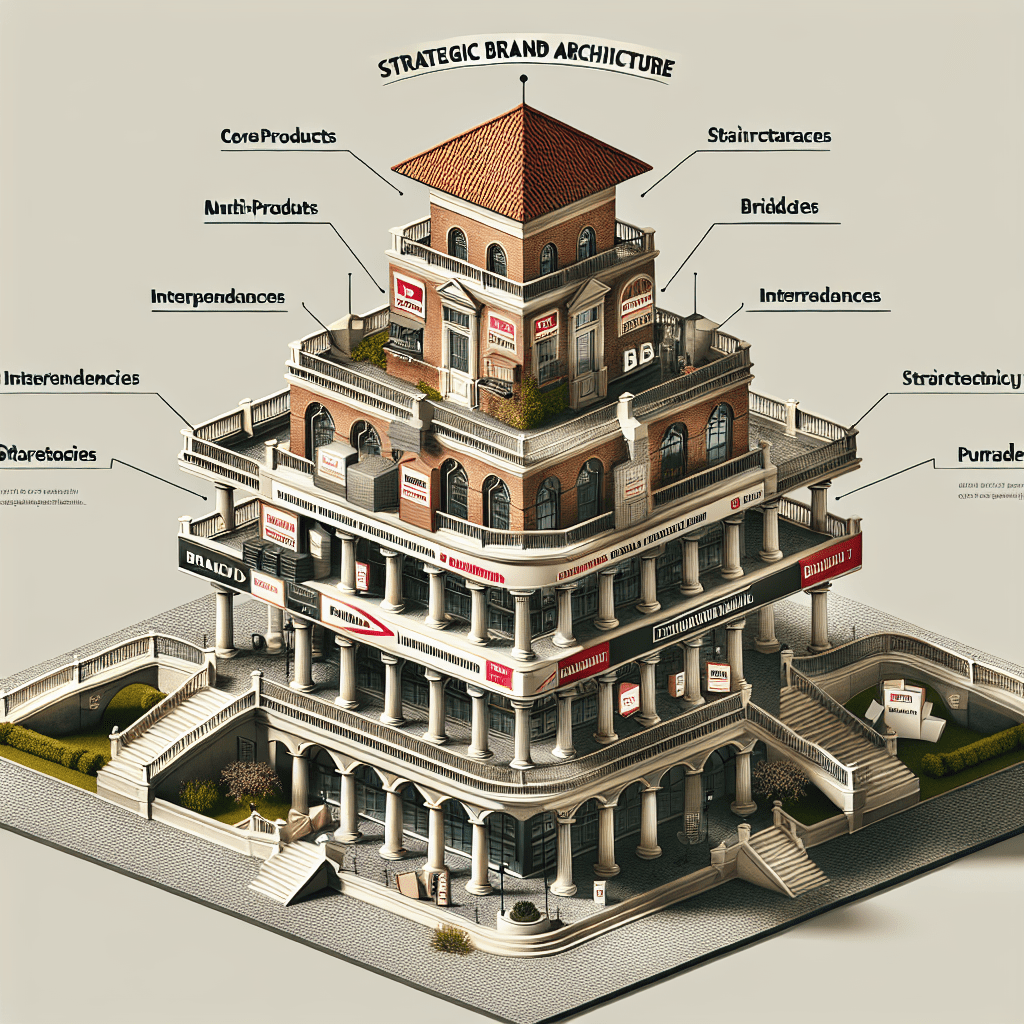-
Table of Contents
- Strategic Brand Architecture for Multi-Product Growth
- Let’s Be Honest: Most Brand Portfolios Are a Hot Mess
- What Is Strategic Brand Architecture, Really?
- Why Strategic Brand Architecture Is Your Secret Weapon for Growth
- Framework: The 5-Step Brand Architecture Audit
- Case Study: Adobe’s Brand Architecture Glow-Up
- When to Re-Architect Your Brand
- Strategic Brand Architecture for SaaS Companies
- Truth Bomb
Strategic Brand Architecture for Multi-Product Growth

Strategic brand architecture isn’t just a design exercise—it’s the growth engine for multi-product companies. If your brand portfolio looks like a Thanksgiving leftovers buffet, it’s time to clean house. This article breaks down how to build a brand architecture that scales, sells, and doesn’t make your customers feel like they need a PhD to understand your offerings.
Let’s Be Honest: Most Brand Portfolios Are a Hot Mess
Somewhere between launching your third product and your fifth rebrand, your brand architecture probably started to resemble a Jenga tower built by a toddler. It’s not your fault—growth is messy. But if you’re serious about scaling, you need to stop duct-taping logos together and start thinking like a portfolio strategist.
Strategic brand architecture is the blueprint that aligns your products, sub-brands, and services under a coherent, scalable system. It’s not about pretty diagrams—it’s about making sure your customers know what the hell you sell, why it matters, and how it all fits together.
What Is Strategic Brand Architecture, Really?
Forget the textbook definitions. Strategic brand architecture is the intentional design of your brand ecosystem to drive clarity, growth, and competitive advantage. It’s how you organize your house of brands, endorsed brands, and sub-brands so they don’t cannibalize each other—or confuse your customers into oblivion.
There are three primary models:
- Branded House: One master brand with all products under it (think Google: Google Maps, Google Drive, Google Ads).
- House of Brands: Independent brands under one parent (think P&G: Tide, Gillette, Pampers).
- Hybrid: A mix of both (think Amazon: Amazon Prime, Alexa, Zappos).
Each has its pros and cons. The key is choosing the one that aligns with your business strategy—not your design team’s mood board.
Why Strategic Brand Architecture Is Your Secret Weapon for Growth
Let’s get one thing straight: brand architecture isn’t just a marketing exercise. It’s a strategic growth lever. Here’s why:
- Clarity: Customers understand what you offer and how it fits together.
- Efficiency: Shared equity reduces marketing costs across products.
- Scalability: New products can be launched without reinventing the wheel.
- Risk Management: Isolates risk when one product tanks (looking at you, New Coke).
Without a clear architecture, you’re not building a brand—you’re building a Frankenstein.
Framework: The 5-Step Brand Architecture Audit
Before you can fix your architecture, you need to audit what you’ve got. Here’s a no-BS framework:
- 1. Inventory: List every product, sub-brand, and service. Yes, even the ones you forgot existed.
- 2. Map Relationships: How do these brands relate to each other? Are they endorsed, independent, or co-branded?
- 3. Evaluate Equity: Which brands have strong recognition? Which are dragging down the portfolio?
- 4. Identify Conflicts: Are any brands cannibalizing each other or confusing customers?
- 5. Align to Strategy: Does your current architecture support your business goals?
If your audit reveals more chaos than cohesion, congratulations—you’re ready for a strategic overhaul.
Case Study: Adobe’s Brand Architecture Glow-Up
Remember when Adobe was just Photoshop? Now it’s a multi-product juggernaut with Creative Cloud, Document Cloud, and Experience Cloud. Their strategic brand architecture allows them to:
- Leverage the Adobe master brand across all products
- Segment offerings by user type (creatives, enterprises, etc.)
- Launch new tools (like Adobe Firefly) without brand confusion
They didn’t just slap “Adobe” on everything—they built a system that supports cross-sell, upsell, and long-term loyalty.
When to Re-Architect Your Brand
Here’s your litmus test. If any of these are true, it’s time to rethink your brand architecture:
- You’ve launched more than three products in the last 18 months
- Your customers don’t understand the difference between your offerings
- Your sales team spends more time explaining the brand than selling it
- Your brand equity is diluted across too many sub-brands
In other words, if your brand feels like a family reunion where no one knows who’s related to whom—it’s time.
Strategic Brand Architecture for SaaS Companies
SaaS companies are notorious for brand sprawl. One product becomes five, then ten, and suddenly you’re managing a zoo of logos. Strategic brand architecture helps SaaS companies:
- Streamline onboarding across products
- Drive cross-product adoption
- Reduce churn by creating a unified experience
Look at HubSpot. They’ve evolved from a single CRM to a full suite—Marketing Hub, Sales Hub, Service Hub—all under one brand umbrella. That’s not luck. That’s strategy.
Truth Bomb
If your customers need a flowchart to understand your product lineup, you don’t have a

